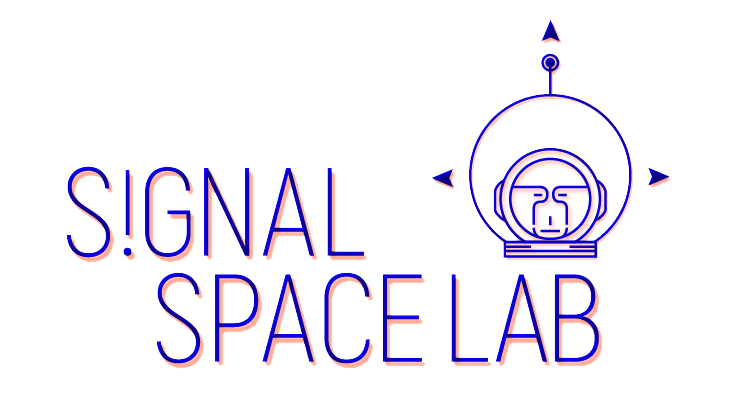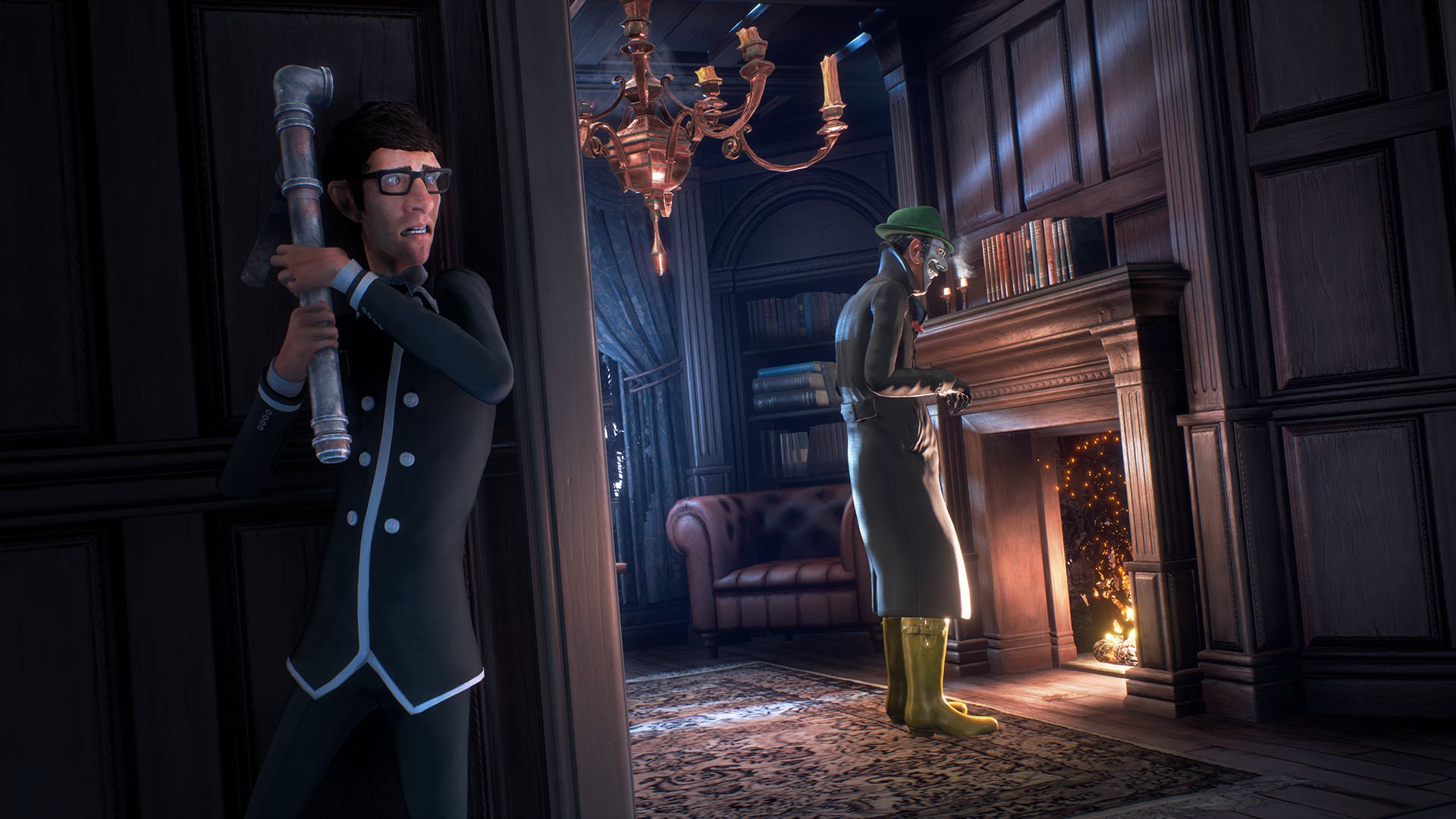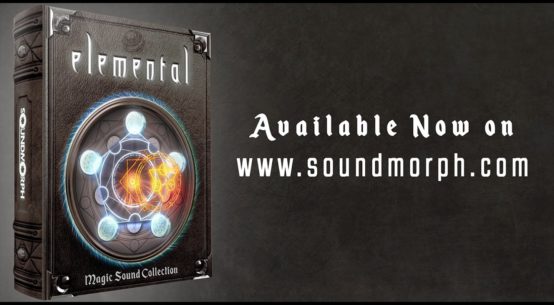
Article by Katie Tarrant
Edited by Sam Hughes
Following my review of We Happy Few back in November, I recently had the pleasure of chatting to Chris Fox (Audio Director) and José Aguirre (Managing Director) of Signal Space Lab; the company responsible for the casting, dialogue recording and mixing, original soundtrack, sound design, and sound mixing for the game.
Signal Space is a company based in Montreal, Canada, that offers a wide range of audio and visual services, all of which can be found here. (http://signalspacelab.com/about/). Founded in 2014, the company has grown from a mere 2 people, to a thriving 20-person team.
There is a lot to be said about the audio in We Happy Few, and one of the coolest things is the tailor-made band that was formed to bring the music and style of the game to life. Signal Space brought together 4 highly accomplished Canadian musicians and created ‘The Make Believes’ – a swinging 60’s boy band comprised of Murray A. Lightburn – lead vocals, guitar, bass (The Dears), Brad Barr– lead vocals, guitar (The Barr Brothers), Andrew Barr – drums, percussion, backing vocals (The Barr Brothers), and Patrick Watson – lead vocals, keys (Patrick Watson).
How did The Make Believes come about?
JOSÉ: “After working solely with a composer on Contrast, we decided to do something different. On projects, you’re often confined to doing what the designers and producers want, but Compulsion were open to anything. We wondered what we could do and found ourselves thinking “what can we bring to a client that is open to listening to us”.
In Canada, there are a miscellany of foundations that provide funding for digital artists and production. Signal Space managed to secure a grant from a company called FACTOR (The Foundation Assisting Canadian Talent On Recordings). FACTOR provides financial support to songwriters, publishers, labels, recordings artists, event producers, and distributors, and it enabled Signal Space to gather the funding they needed to pursue their idea.
JOSÉ: “We ended up recruiting the musicians [for The Make Believes] one-by-one. We had coffee and pitched the project to them, and gradually got them on board. We had a bit of history with The Make Believes, we had the grant, and the desire to take a risk and do something different.”
In 2015, Christopher Fox joined Signal Space as their Audio Director, and took over the creative aspects of the project.
What was the process like?
CHRIS: “Scheduling was always tricky. Getting them interested and involved was managed by José, and then working around their tours was the next challenge. They’re all seasoned artists, and we couldn’t iterate as many times as we could have with a composer.”
“Another challenge was releasing the music around the schedules of 3 different labels with these artists all having different record release schedules. There were conflicts with their own personal release dates that had to be accommodated.”
The Art Director from Compulsion Games, Whitney Clayton, had references to hand over to us. We picked 7. We had 1 round of revisions, and then we went to the mix stage.
How was the mixing process handled? Was it influenced by the same creative references?
CHRIS: “We mixed to the references to a degree and ensured that we kept to an analogue sound. Not only did we mix in that direction, but the band also recorded with that 60’s style in, using vintage pre-amps and instruments.
The band went away from our initial meeting with visual, audio, and game lore references, and came back with 10-12 tracks they had created using them.”
Was this the first time any of the musicians had worked on a game?
CHRIS: “I believe one of them may have worked on some digital projects before, but it was mostly their first time working on a game, and so it was a new process for them. Murray Lightburn continued to work with us on the game, and he wrote some music for the second part of the story trailer, and the launch trailer.”
What was the overall creative process like for The Make Believes?
CHRIS: “The team gathered in a pub for a big brainstorm after listening to the references and being briefed on the game world, and the people in it. The lyrics were inspired by all of that.”
“The first revision was to bring more of the reference’s in to the music. [As aforementioned] the band created 10-12 tracks, and we then had a second meeting to select the ones we wanted. A fun fact – the lyrics for ‘La La La’ were actually just placeholder lyrics as we hadn’t decided what to write there at that point. But we ended up keeping them because everyone liked them so much. We felt like it lent itself to the feeling of not being quite with it, and how your character feels whenever you’re on joy.”
At what point in the development process was all of this happening?
CHRIS: “It was around the end of 2015 that we were brought onto the project, and the final masters were completed in April 2016. The game had a long development process, so we had to keep quiet for 2 years until ‘La La La’ was featured on a trailer at E3.”
How did the music video come about?
The music video was handled mostly by Gearbox. It was filmed in LA but had the musician’s approval before the final version went out.
So, as for the rest of the game’s soundtrack, what was that process like?
As well as The Make Believes, Signal Space also had composer Nicolas Marquis on board to deliver the rest of the game’s marvellous soundtrack. The environmental music was created after The Make Believes project. Nic was given similar references from Whitney and was writing on a progressive basis as new environments for the game were made. He also contributed to some of the cinematics, with the rest of the cinematics handled by composer Jon Licht. I asked José how Nicolas came to work on the project.
JOSÉ: “I’ve known Nic for a long time and I trust him, so that’s why we work together a lot. He worked on Contrast, and when you know someone, you know exactly what you’re going to get. Even with The Make Believes – we knew the musicians already had a style that was suitable.”
As for the process:
CHRIS: “The length of the development process was tricky. We had cinematics that were made right at the beginning of the project. We recorded a young actress called Eloise Webb who played Margaret. We had to record some additional lines 5 years later, and her voice was totally different, so we had to work around that. It created a lot of challenges around recreating or recording new content because we had challenges maintaining continuity with things like signal change, proximity, people’s voices, and so much more.”
“As well as The Make Believes, we also collaborated with Compulsion Games to do a VR element for the game based around Uncle Jack. That brought a totally new direction to the game.”

What was the process like for the sound design?
CHRIS: “The sound design for the game was handled by our sound designer and integrator, Valentino Lercher. It was mostly created as and when [it was required] throughout the development process.”
There are a lot of small details in the sound that a lot of people don’t notice:
- The intake of joy is matched with changes in the dialogue.
- The ‘jubilator’ music is one tone when you’re off joy, but when you’re on joy, it has multiple tones. Equally when you’re crashing (suffering joy withdrawal), everything is slowed down.
- The tones for fast travel are the same as the tones you hear on the metro system in Montreal.
- Some of the UI sounds were inspired by the redactor sounds you hear when your character is approving/censoring the news at the beginning of the game.
- If you’re near a record player, you’ll hear the needle slipping if you’re off joy, and then it will resume normal play after you take it.
- If you select the H in We Happy Few on the launch screen, you hear a compliment from the compliment machine.
As We Happy Few is a procedural game, most of the audio is streaming, which is beneficial for memory, but the procedural side of things brought its own limitations. Some of these examples include cheap viagra philippines the fact there we no scripted events, so the team couldn’t put in things like jump scares. There was also a limit on how many sounds that could added to objects, due to the potential of too many of them procedurally generating within range of one another.
As for dialogue:
CHRIS: “We had approximately 30,000 lines of dialogue (around 250,000 words), so there was a LOT of dialogue editing. We always have a Friday meeting with everyone at Compulsion, and Valentino would always give us an update on how many lines of dialogue he’d edited that week which always got a laugh. “
All in all, is this something you’d consider doing again?
CHRIS: “It was challenging to do but it was definitely worthwhile.”
JOSE: “One of our strengths at Signal Space is that we can bring more ideas as an agency, and we’re unique in what we have to offer. No game had really done something like this before, so there was no precedent for what we had to do, and we just had to manage things as they came along.”
CHRIS: “As a full production house Signal Space Lab brings together a host of creative and technical thinkers to push the boundaries of how we create and realise new media. Whether it’s audio or video our mandate is to breathe life into our projects and make them as original as possible.”
LINKS
Official
We hope you enjoyed this interview, check out others in our Interviews section. Don’t forget to sign up to our Monthly Newsletter to make sure you don’t miss out on our reviews and interviews.
We also love to deliver as much content as we can but as a team of volunteers, we have a Patreon running to help us continue to deliver, see the links below!




